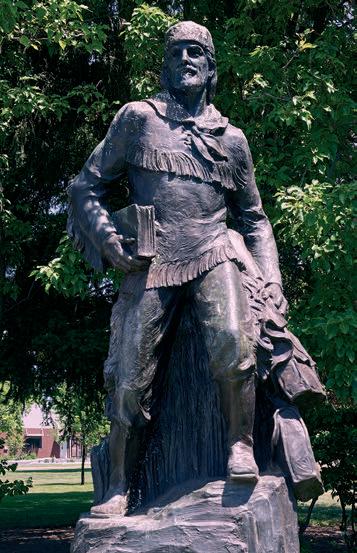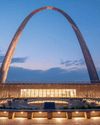
The Nez Perce men had traveled over 1,900 miles to ask Clark a question: Was it true that the white man had a book that explained the right way to worship the Great Spirit? Did the book tell what was pleasing to the Great Spirit? The book the Nez Perce were asking about was the Bible.
That story, most likely exaggerated, appeared on the front page of New York City’s Christian Advocate newspaper in 1833. Soon Protestant preachers and missionary societies were calling for volunteers to go out to Oregon Country to spread Christianity.
Not much was known about Oregon Country in the 1830s. Only a few explorers, trappers, and traders had reached the huge territory. But two volunteers came forward. One was a 27-year-old teacher named Narcissa Prentiss. The other was a 33-year-old doctor named Marcus Whitman. Both lived in western New York state. Narcissa was a single woman, so she was not seriously considered by the missionary board. No known white women had ever made the journey. Marcus’s application was accepted. Marcus knew the Prentiss family and heard of Narcissa’s interest in becoming a missionary. He called on the Prentiss family and proposed marriage to Narcissa. She accepted.
The American Board of Commissioners for Foreign Missions (ABCFM) wanted Marcus to make a preliminary trip before he and Narcissa moved to Oregon Country. In 1835, Marcus went with the Reverend Samuel Parker to test the idea of establishing missions among the Indigenous peoples. Marcus learned many skills on that trip. He learned how to load a pack animal. He learned how to ford swollen streams. He learned how to live off the land and to ride long hours through all kinds of weather.
Diese Geschichte stammt aus der October 2023-Ausgabe von Cobblestone American History Magazine for Kids.
Starten Sie Ihre 7-tägige kostenlose Testversion von Magzter GOLD, um auf Tausende kuratierte Premium-Storys sowie über 8.000 Zeitschriften und Zeitungen zuzugreifen.
Bereits Abonnent ? Anmelden
Diese Geschichte stammt aus der October 2023-Ausgabe von Cobblestone American History Magazine for Kids.
Starten Sie Ihre 7-tägige kostenlose Testversion von Magzter GOLD, um auf Tausende kuratierte Premium-Storys sowie über 8.000 Zeitschriften und Zeitungen zuzugreifen.
Bereits Abonnent? Anmelden

Airborne Animals
Humans have taken to the skies in balloons, gliders, and airplanes-but we're not alone among the clouds. Animals of all sorts have evolved to harness wind power.

TAKING OFF
The Wright brothers expected airplanes to “take off,” but even they might be amazed at the way the airline industry has become big business. In the past, it was expensive to send something by plane.

WHY KITTY HAWK?
The Wright brothers searched carefully for the best place to test their gliders and flying machines. Their main concern was for good, steady winds. But they also hoped to find a remote location to allow them to perform tests away from the public eye.

Da Vinci's 4 Designs
Have you ever wondered how a bird flies? Leonardo da Vinci (1452–1519) did. He thought that understanding how a bird flies would provide the key to human flight. So, what did da Vinci learn from birds?

Along Rivers and Through Prairies
An Interview With Dr. Robert Moore

Routes Well Traveled
The United States is not the only country that celebrates its historic routes. But the routes included here are much older!

Last Stop, Independence
For many Oregon Trail pioneers, Independence, Missouri, was the last stop in the United States. Soon after it was founded in 1827, the waterfront town became a strategic city on the Missouri River.

Danger on the Trail
About 20,000 emigrants died on the Oregon Trail. That averaged to about one grave for every 100 yards from the Missouri River to the Willamette Valley. And because pioneers had to keep to a steady pace each day, burials on the trail were hasty. There often was no time to create a marker to note a burial site.

Keeping the Legacy Alive
Several sites in Virginia work to keep alive James Monroe's legacy. In Westermoreland County, Monroe Hall, Monroe's birthplace and the place he called home until he was 16 years old, has been re-created.

The American Colonization Society
In 1821, President James Monroe signed into law the controversial Missouri Compromise.